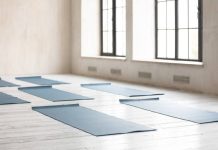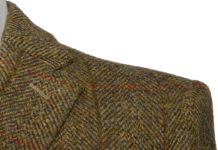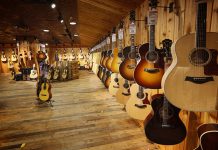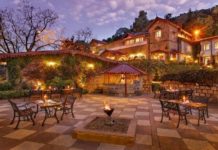For generations, the inhabitants of the Outer Hebrides of Scotland possess handwoven an intricate fabric the world knows just as Harris Tweed now we will come to know about the History of Harris Tweed. The islanders of Lewis, Harris, Uist, and Barra have produced this cloth entirely by hand and have been famous for its excellence in their weaving. Up until the mid-nineteenth century, Harris Tweed was utilized only on their crofts or offered at local markets. But as then, Harris Tweed is now a wardrobe staple internationally and is worn with everyone from royalty to Hollywood icons. Now, Harris Tweed has become a luxury fabric, used by the style houses Alexander McQueen, Vivienne Westwood, and Chanel. Back in 1993, Harris Tweed was further protected by upgrading the Act of Parliament; the sole fabric from the United Kingdom to hold this significant recognition.
The wool is fibre dyed prior to being blending and spinning, letting the Harris Tweed Hebrides Design Team present plenty of colors into the yarn.
Because of the way History of Harris Tweed and how its made, there are almost an unlimited number of designs, shades, and colors to choose from; all the way through shape Plain Twills and conventional Herringbones to more complex Plaids and modern design combinations.
HARRIS TWEED HEBRIDES
Harris Tweed Hebrides is the biggest producer of Harris Tweed in the world. In their mill at Shawbost on the west side of Lewis, they currently employ over 80 people and operate directly with over 130 self-employed home-weavers located around the island of Lewis and Harris. Harris Tweed Hebrides not only provides the UK but exports the unique fabric all around the world, with the USA, Japan and increasingly China significant markets for Harris Tweed. In spite of the global success of Harris Tweed Hebrides exactly the exact same production methods and skills are employed which have been utilized for decades on the islands.
THE MANUFACTURING PROCESS
As outlined at the 1993 Harris Tweed Act of Parliament, every item of Harris Tweed that carries the Orb’ Trademark must carefully comply with a conventional manufacturing process.
SHEARING AND WOOL GATHERING
The Harris Tweed narrative starts with pure virgin wools, which are blended together to acquire the advantages of their unique qualities and characteristics.
Even though the majority of the wool is grown mostly on the mainland, in the first summer, the island communities join together to round up and shear the neighborhood sheep, that are dotted through the landscape
WASHING AND DYING
Harris Tweed is really dyed in the wool, which means the wool is fibre dyed before being spun as opposed to dying spun yarn. This usually means the mill can gently combine different colored wool with each other to create a myriad of intricate colors and colors.
BLENDING AND CARDING
This soft yarn then has a spin imparted to it since it is summoned to give it maximum strength for weaving.
The spun yarn is wound on bobbins to supply the components of weft (left to right threads) and twist (vertical threads).
SPINNING
This soft yarn then has a spin imparted to it since it is summoned to give it maximum strength for weaving.
The spun yarn is wound on bobbins to supply the components of weft (left to right threads) and twist (vertical threads).
WARPING
This extremely significant and very skilled process sees tens of thousands of warp threads accumulated in long hanks in a very specific order and wound onto large beams prepared to be delivered, together with yarn for the weft, into the weavers in their houses.
HAND WEAVING
All Harris Tweed is handwoven on a treadle loom at each weaver’s home, not at a mill.
The warp and yarns for the weft arrive from the mill, and then the weaver places to work hand-tying the new yarns to the tail-ends of the previous weave, to make it easier to thread on the loom.
It is then a matter of steadily weaving the fabric, always observing the fabric as it is slowly woven together throughout the loom.
FINISHING
The tweed contributes to the mill in its greasy state’ and here it passes through the nimble hands of seasoned and sharp-eyed darners who fix even the tiniest of defects. Once ready, the fabric is completed.
Dirt, oil and other impurities are removed by washing and beating in soda and soapy water before it’s dried, steamed, pressed and discharged into a perfect, perfect condition.
Harris Tweed is really a sustainable business that has helped the economy of the Western Isles of Scotland for decades. Supporting the Harris Tweed industry ensures that there continue to be employment opportunities on the isles for people who live there. It’s a beautiful choice to mass-produced machine-made cloths, lasts a lifetime and comes with a trustworthy warranty of quality makes its a part of the History of Harris Tweed.
- The Joy of Second-Hand Toys: Giving Old Toys a New Life - October 22, 2024
- How Lockridge Is Leading the Way in NDIS Property Solutions - October 18, 2024
- Understanding the Cost of Robotic Knee Replacement Surgery in Mumbai - October 18, 2024



























